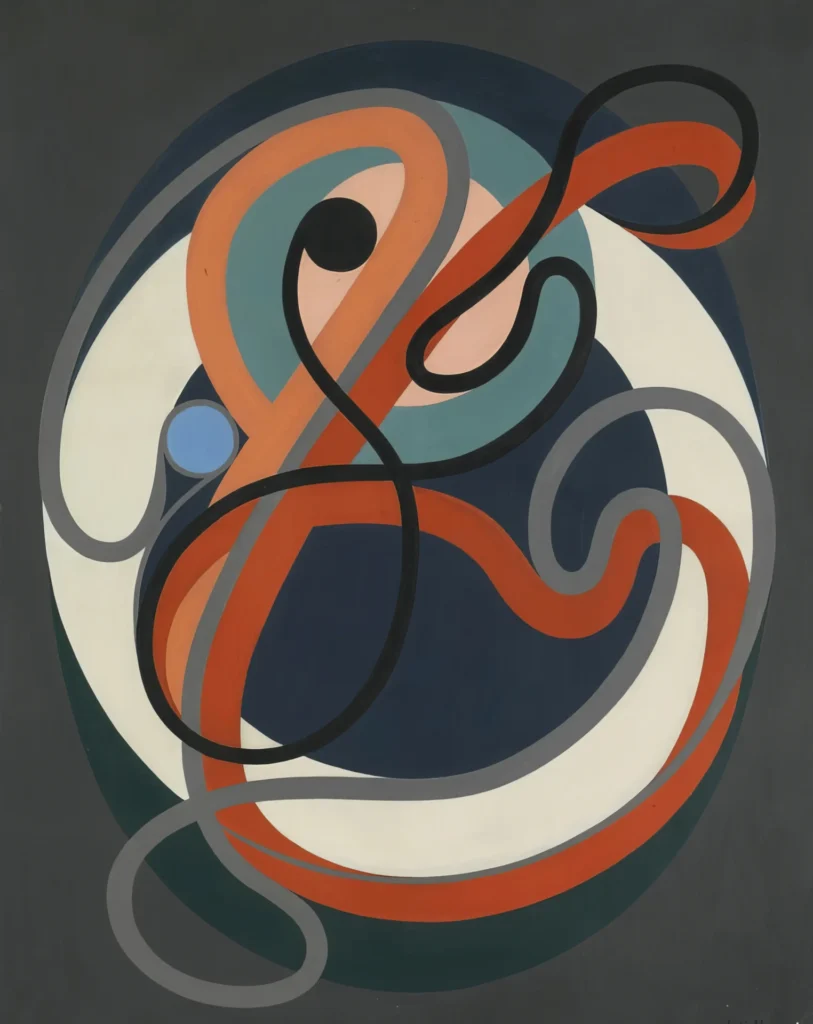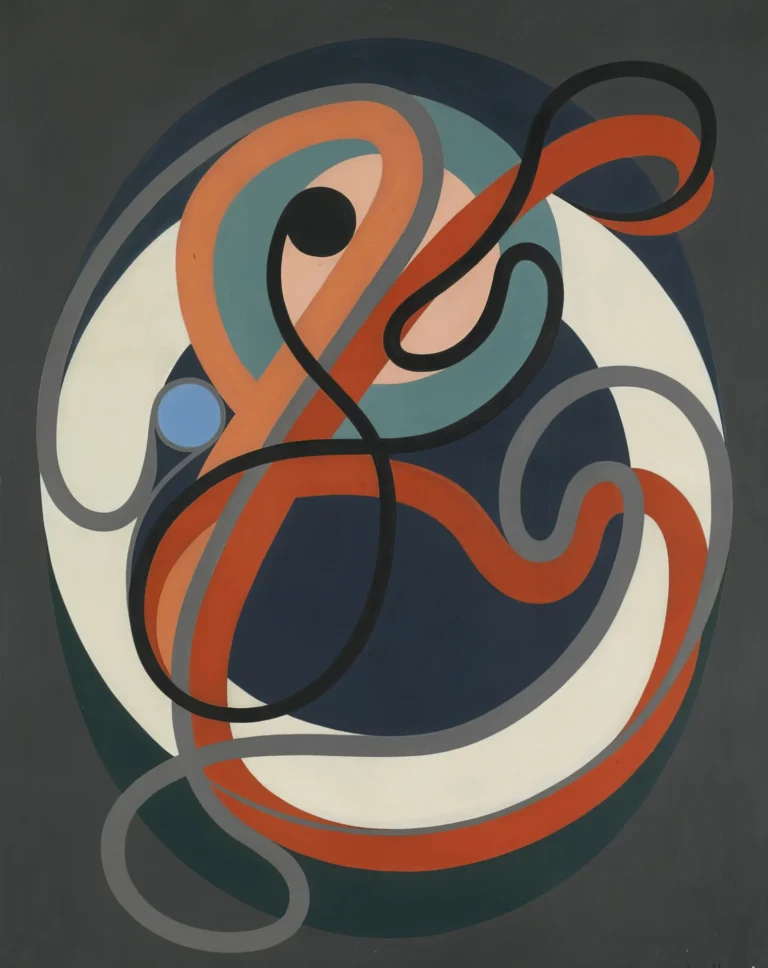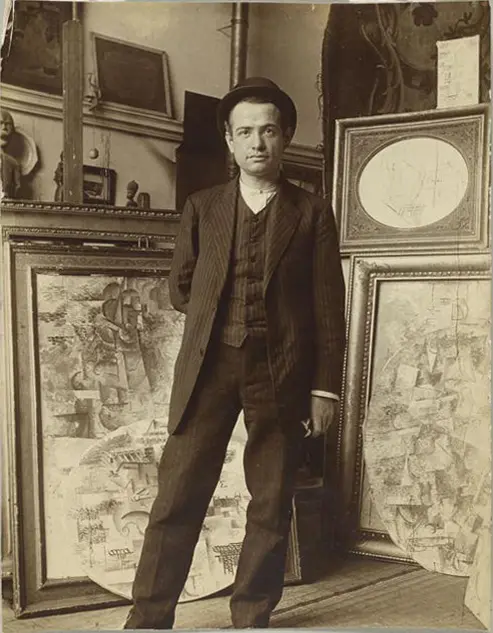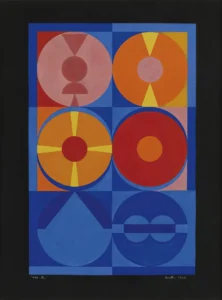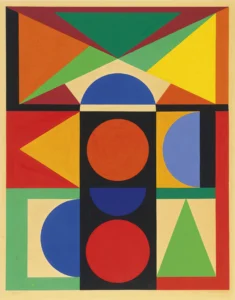Composition Abstraite (1932)
Created around 1932, Composition Abstraite by Auguste Herbin represents a pivotal moment in the artist's evolution back to abstract art. This painting is a bold expression of geometric shapes and vibrant colors, executed in gouache with graphite on paper. Measuring 24.7 x 34.7 cm, it is a testament to Herbin's commitment to the principles of the Abstraction-Création group, celebrating pure geometric forms over representational imagery.
Circa 1932
About the Artwork
In 1931, Auguste Herbin, along with several avant-garde artists, co-founded Abstraction-Création, a movement that advocated for the supremacy of geometric forms in art and sidelined narrative or representational content. Composition Abstraite emerged during his return to abstraction, reflecting his deep-seated dedication to these principles. The painting employs a dynamic interplay of colors and shapes, emblematic of the evolving language of modern art. Herbin's insightful exploration of color theory and form is evident as he merges diverse hues to create a piece that transcends the merely visual—it aims to evoke emotions and engage viewers intellectually.
Did You Know
Auguste Herbin was a co-founder of the Abstraction-Création group, which was formed to promote abstract art and encourage a departure from naturalistic representation in favor of pure geometric forms.
Herbin’s works, including Composition Abstraite, are noted for their vibrant colors and unique arrangements, showcasing his deep understanding of color theory and the emotional resonance colors can convey.
Herbin’s contributions to abstract art significantly influenced many subsequent movements and artists, making him a key figure in the development of modern art throughout the 20th century.




